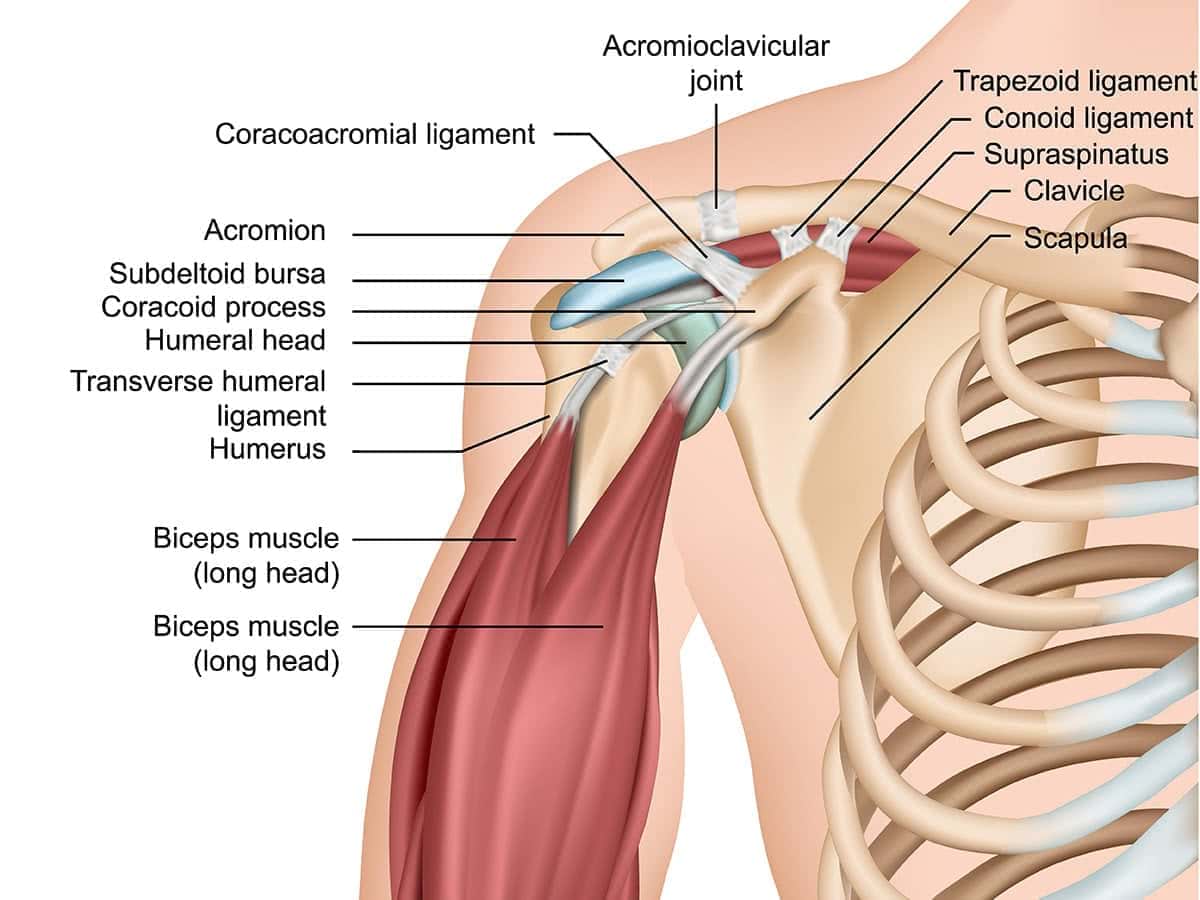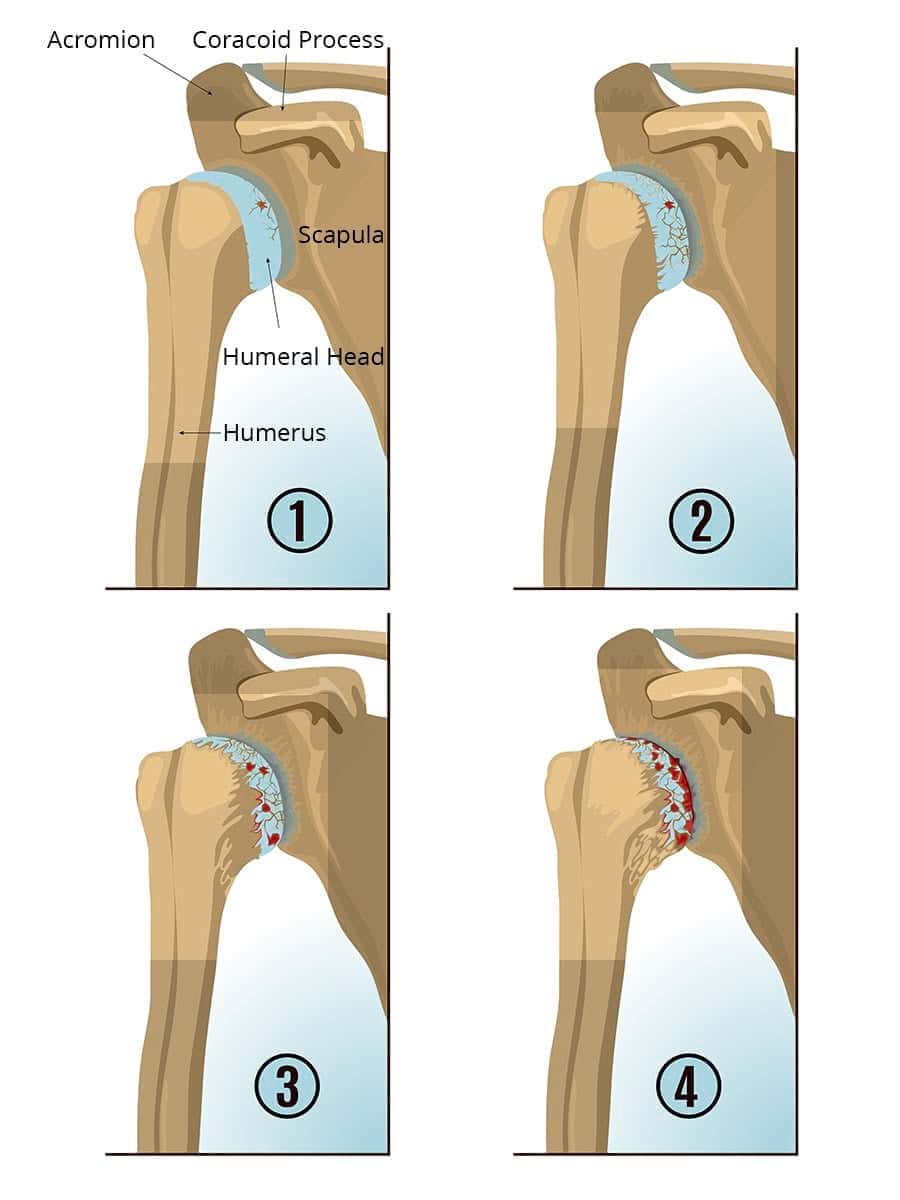Introduction
The shoulder comprises three components – the humerus, the clavicle and the scapula. The humerus is the long upper bone in the arm, the clavicle is the collarbone and the scapula is the shoulder blade. A ball at the end of the humerus locates into a socket on the scapula and the clavicle is connected to the scapula at the acromioclavicular joint ('AC joint'). Together with the associated muscles and tendons they allow a wide range of movement of the arm and the shoulder.

Shoulder arthritis can develop at any age, but primarily affects people over 50.
Causes
There are two common types of arthritis that affect the shoulders – osteoarthritis and rheumatoid arthritis.
Osteoarthritis is a degenerative condition where the cartilage in the joints wears away, eventually allowing bone-to-bone contact. Part of the reason why shoulder arthritis predominantly affects older people is that it results from a buildup of minor injuries over a period of time – 'wear and tear' - rather than any one specific incident. Rotator cuff tears in particular can accelerate the development of osteoarthritis in the shoulder.

Rheumatoid arthritis on the other hand is an autoimmune disease which causes inflammation of the synovium (a thin layer of tissue surrounding joints).
Symptoms
Shoulder arthritis causes one or more of the following symptoms:
- Pain in the shoulder when using the arm / shoulder.
- Range of motion of the shoulder becomes more limited.
- Shoulder becomes stiffer.
- Swelling/tenderness in the area of the shoulder joint.
- Clicking or grinding sensation in the joint during movement of the arm / shoulder.
These symptoms generally worsen over time and many patients find they come and go, sometimes linked to changes in the weather.
Tests / Diagnosis
A number of tests are necessary to diagnose shoulder arthritis. These generally include a physical examination of the shoulder, x-rays of the joint and/or an MRI. In some cases, Dr Moopanar may also recommend:
- A synovial fluid test (sometimes called 'joint fluid analysis'), where a small amount of the fluid surrounding the joint will be extracted and sent for testing.
- Arthroscopy.
Treatment
Initial treatment generally involves physical therapy (such as stretching and some strengthening exercises) and limiting or avoiding certain movements that cause pain. Anti-inflammatory pain medication and cortisone injections may also be recommended. Where these non-invasive approaches do not help total shoulder replacement surgery or a reverse shoulder replacement may be recommended.
Related Information
Total shoulder replacement
Reverse shoulder replacement

